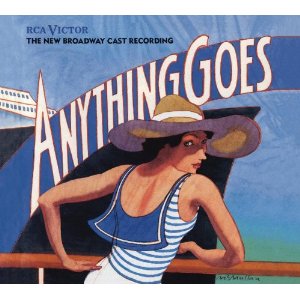SITE GUIDE
SEARCH
REVIEWS
REVIEW ARCHIVES
ADVERTISING AT CURTAINUP
FEATURES
NEWS
Etcetera and
Short Term Listings
LISTINGS
Broadway
Off-Broadway
NYC Restaurants
BOOKS and CDs
OTHER PLACES
Berkshires
London
California
New Jersey
DC
Philadelphia
Elsewhere
QUOTES
TKTS
PLAYWRIGHTS' ALBUMS
LETTERS TO EDITOR
FILM
LINKS
MISCELLANEOUS
Free Updates
Masthead
A CurtainUp Review
A Dream Play
|
"By why this eternal complaining? Has life no cause for joy?" — Agnes
|
Strindberg, often viewed as a gloomy misogynist, wrote The Dream Play in 1901 which makes it part of his "post-Inferno" period (his novel Inferno was penned during his psychic melt-down in the mid-1890s) and reflects the dramatic shift in his work from interpersonal conflicts to self-to-soul reveries.
Indeed the pivotal character in A Dream Play is Agnes (lamb of god), a female Christ figure who exudes tenderness and compassion. The non-linear plot is difficult to put in a nutshell, but suffice it to say that Agnes descends to Earth to witness and experience first-hand the painful paradoxes of human life. And she ultimately learns, in her guises of friend, lover, and wife, that "human beings are to be pitied."
Given its heavy symbolism, large dramatis personae (over 40 characters), and its surreal progressions from Parnassus to Earth, and vice versa, it's no wonder the play is rarely mounted nowadays. However, Robert Wilson did stage it at the Brooklyn Academy of Music in 2000 (in Swedish with English surtitles), curtainup has encountered two production, one at the Berkshire Theatre Festival in 2001 and another at London's National Theatre in 2005. (Berkshire review London review ) But unlike Miss Julie or Dance of Death (a new production of which I will be reviewing shortly) revivals have been few and far between.
That said, Rno and Pang's slimline adaptation is a wonderful opportunity to see it well but modestly staged so that it does flow like a dream. They have pared down the play's symbolism and retooled many of its social scenarios. No visual pyrotechnics here. No glimpses of castles, fortresses, or of that wild chrysanthemum sprouting from a castle turret at the finale. Ro and Pang nevertheless deliver the content and score with their simplicity.
The creative team is a confident crew that does much with little. Joseph Lark-Riley's set is spare but elegant. Strindberg's "bank of clouds" in the Prologue is represented by a series of narrow rectangular panels on the stage's back wall, each a miniature blue-and-white canvas. These panels eventuallyn represent a skyscape or seascape, all depending on the particular episode unfolding in this turned-around dream world.
Alice Tavener's costumes rangine from a military outfit to tutus and effectively blend their colorful textures without being too garish. Sarah Luhrie's monochrome lighting could have been spookier, but taken as it is, you never miss a beat of this dreamscape.
Alex Hawthorn's sound draws more from the ocean'the s depths than Parnassus' heights. By the play's end, marine-like sound effects so intensify that you can almost listen to those figurative tides of time moving forward and backward, and drifting on toward infinity.
Although there are no star turns in this production, his 10-member ensemble collectively and ably inhabit 40 characters during the evening. All but three performers become quick-change artists and masters (or mistresses) of improvisation.
You won't forget the courage of Tina Chilip's Agnes, the wisdom of Jojo Gonzalez's Poet, or the loyalty of David Shih's Officer, as he serenades his Veronica at the stage door. What begins as a robust aria ends up as a spoof of "Maria" from West Side Story, injecting a light comic touch.
For Strindberg's admirers and those new to his work, this cleanly directed production assembles all of its puzzling pieces into a coherent portrait which gives fresh theatrical backing to those critics who have dubbed Strindberg the Picasso of modern drama.
|
.
A Dream Play Written by August Strindberg Adapted by Sung Rno & Andrew Pang Directed by Andrew Pang Cast: Jojo Gonzalez (Poet, Prompter), Tina Chilip (Indra's Daughter/Agnes), Brent Yoshikami (Indra/Bill Poster/Father/Gentleman/ Senior Citizen/Blind Man/ Dean of Theology), Eston Fung (Glazier/ He/ 2nd Coal Carrier/ Boy) David Shih (Officer), Siho Ellsmore (Mother/ Discouraged Singer/ Quarantine Master/ Philosophy Dean) Sophia Skiles (Stage Door Keeper/ Lina Edith/ Theatre Personnel), Rica de Ocampo (Ballet Dancer/ Kristin/ She/ Wife 1 & 2/ Medicine Dean/ Victoria), Alexis Camins (Lawyer/ Coquette/ Chancellor), Dax Valdes (Husband, Policeman, Pensioner/ 1st Coal Carrier/ School Master/ Law Dean/ Old Dandy). Sets: Joseph Lark-Riley Lights: Sarah Lurie Costumes: Alice Tavener Sound Design & Composition: Alex Hawthorn Choreographer: Dax Valdes Stage Manager: Ed Herman The HERE Center at 145 6th Avenue. For tickets and information, visit www.here.org or call 212-352-3101. From 3/22/13; opening 3/27/13; closing 4/13/13. Monday through Saturday @ 8:30pm and Saturday matinees @ 4pm. There will be no performances on March 30 (4pm), April 3, April 6 (4pm) and April 8. Running time: 90 minutes with no intermission Reviewed by Deirdre Donovan based on press performance of 3/23/13 |
| REVIEW FEEDBACK Highlight one of the responses below and click "copy" or"CTRL+C"
Paste the highlighted text into the subject line (CTRL+ V): Feel free to add detailed comments in the body of the email. . .also the names and emails of any friends to whom you'd like us to forward a copy of this review. Visit Curtainup's Blog Annex For a feed to reviews and features as they are posted add http://curtainupnewlinks.blogspot.com to your reader Curtainup at Facebook . . . Curtainup at Twitter Subscribe to our FREE email updates: E-mail: esommer@curtainup.comesommer@curtainup.com put SUBSCRIBE CURTAINUP EMAIL UPDATE in the subject line and your full name and email address in the body of the message. If you can spare a minute, tell us how you came to CurtainUp and from what part of the country. |

Slings & Arrows- view 1st episode free
 Anything Goes Cast Recording
Anything Goes Cast RecordingOur review of the show
 Book of Mormon -CD
Book of Mormon -CDOur review of the show

